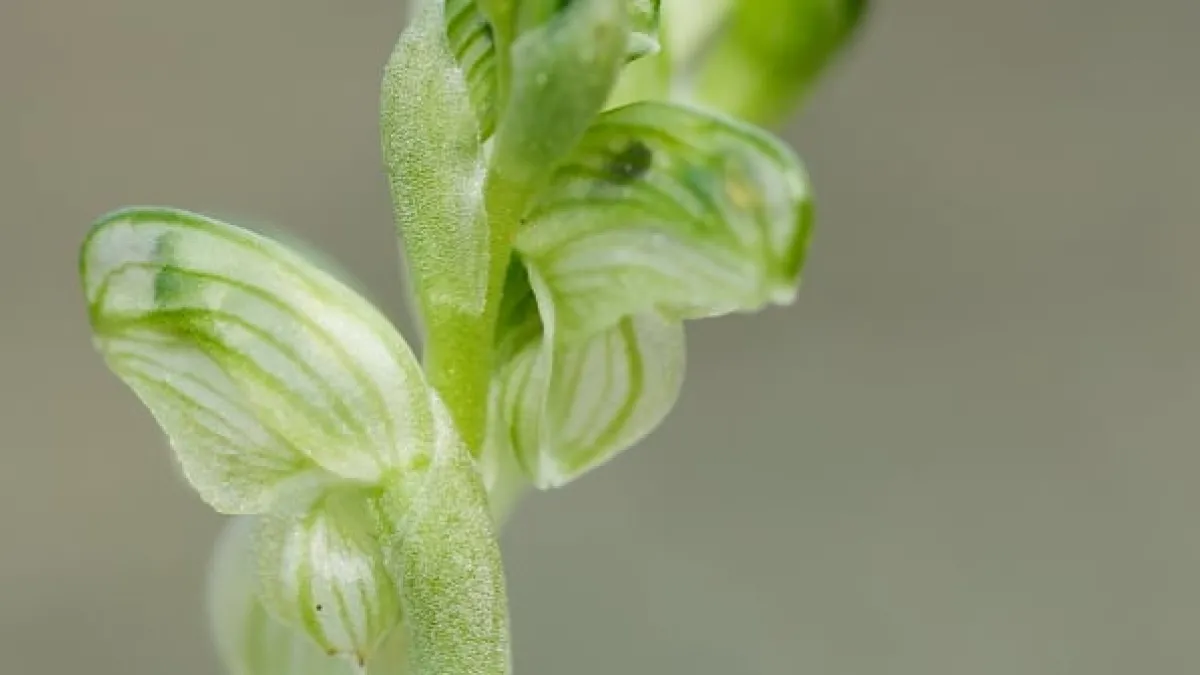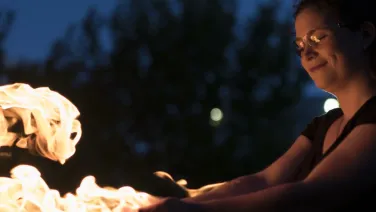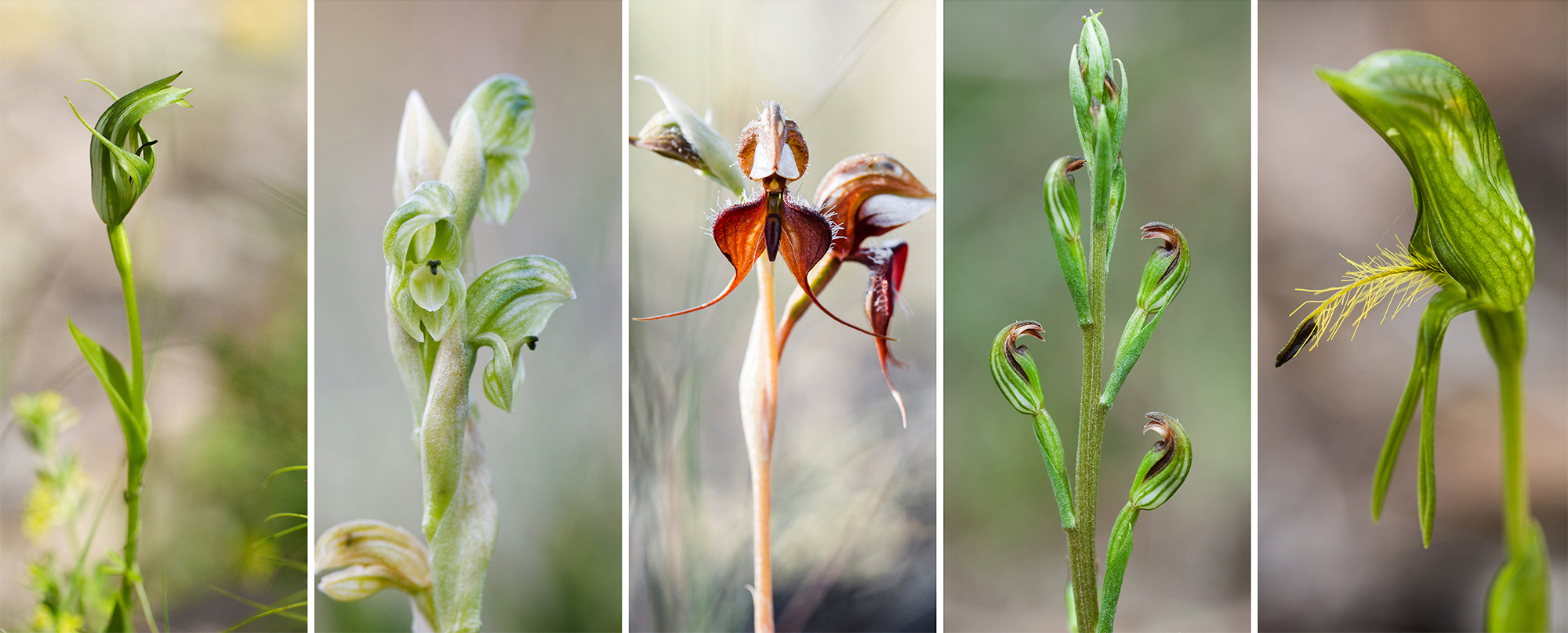
Uncovering the oddities of Australian orchids
You’ve heard about the birds and the bees – but do you know about the gnats and the orchids? Whilst not your typical example of reproduction in nature, it is an interesting one.
These native orchids act more like mouse traps than passive flowers. All the orchid needs to do is trick an insect into mating with them, and then bam, the botanical trap snares the unsuspecting insect into pollination.
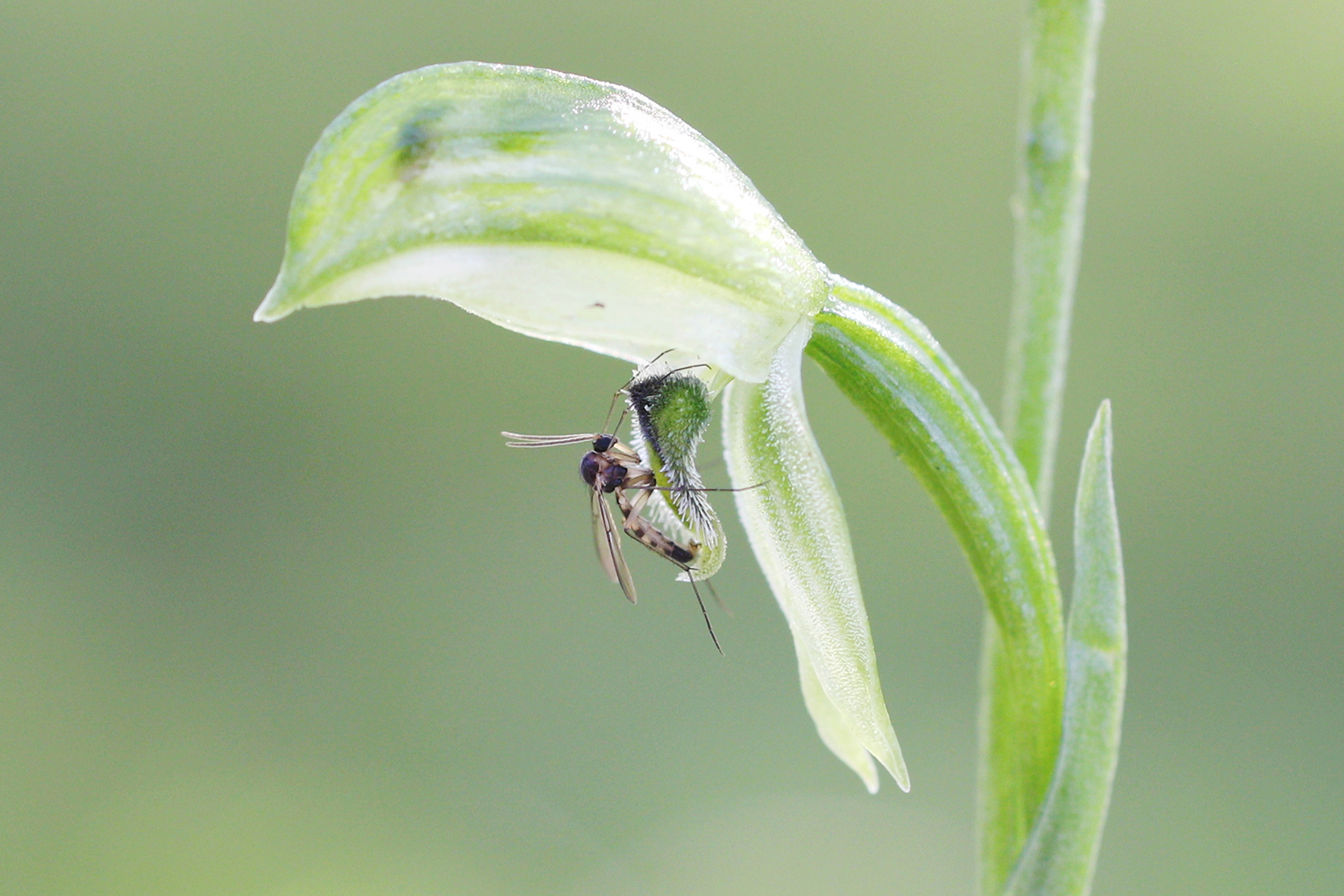
Dr Tobias Hayashi from the ANU Research School of Biology has just graduated from his PhD investigating this pollination strategy, called ‘sexual deception’, in greenhood orchids. His research proved just how much this genus of orchids relies on the fungus gnat for its survival.
Orchids are famous for their fascinating shapes and obscure pollination strategies, but Dr Hayashi says this is all a relatively new research area for many Australian orchids.
“There hadn’t really been a concerted effort to study pollination in greenhoods at all until 2014, which was when one of my co-supervisors published the first paper confirming sexual deception in a greenhood species.”
Considering there are 300-odd species within the greenhood genus, that’s hundreds of greenhoods that hadn’t been studied.
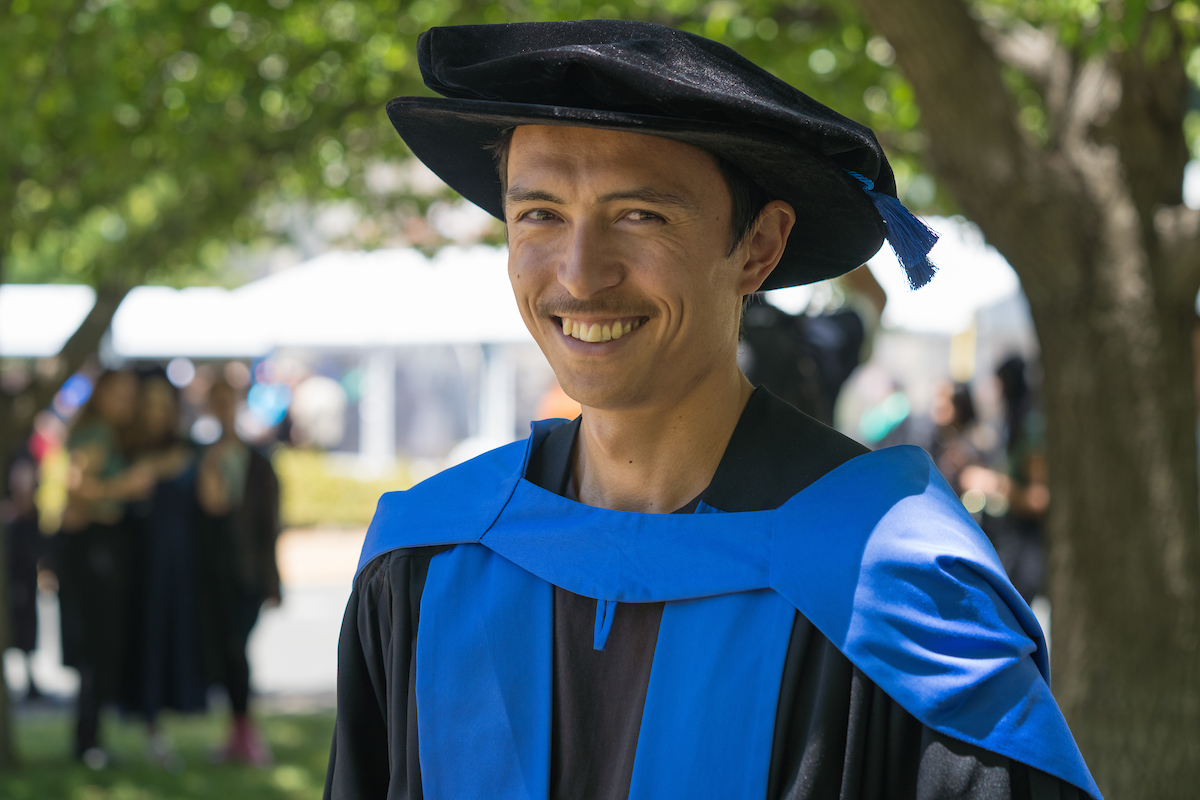
Dr Hayashi’s PhD involved a massive twenty months of fieldwork: locating the orchids and fungus gnats themselves; figuring out which gnats pollinated which orchids; and performing experiments that demonstrated the chemical and physical properties of the orchid-gnat interactions.
Many of these orchids were found in Perth, in nearby bushland reserves and a university campus. Others were found in national parks in regional Victoria or near Canberra. Some fungus gnats even popped up in the backyard of his accommodation in Perth.
“The underlying theme for a lot of the work that I did during my PhD was: How the hell have these things evolved? What’s going on?” he says.
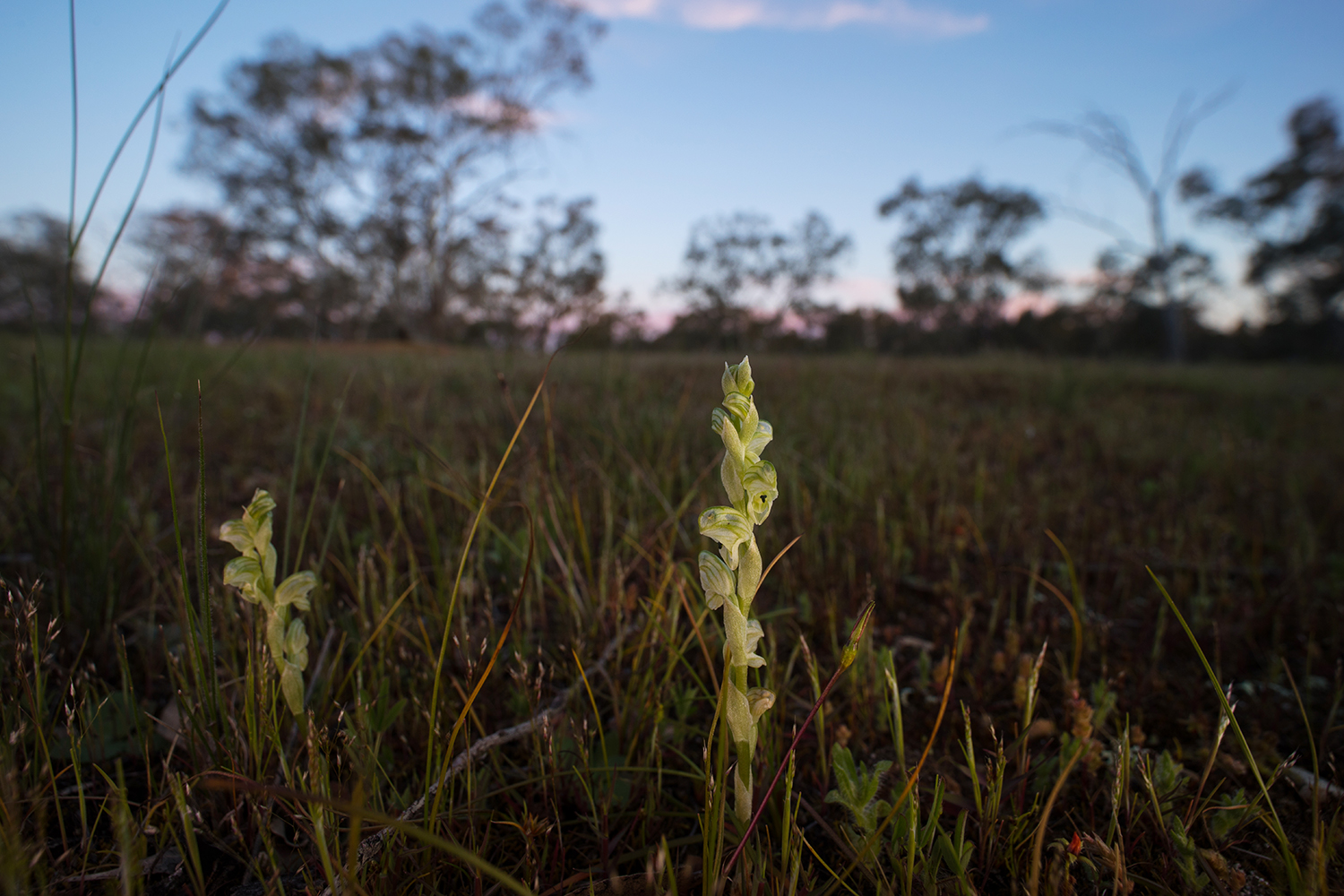
So what was going on?
“Basically, the orchid produces these unusual chemicals, which mimic the sex pheromones that the female insects produce,” he says.
For the greenhoods, this lures the male fungus gnat, which will often try to copulate with a flower, thinking it is a female.
“The labellum, which is a central part of the flower, is on a little hinge, and can flip upwards. So the fungus gnat’s sitting there trying to mate with the labellum of the orchid,” Dr Hayashi explains.
This action then triggers the labellum to flip up and trap the fungus gnat inside the hood of the orchid. Once the gnat is trapped, there’s only one thin passageway out of the flower, and to use it the gnat will inadvertently collect some pollen, or drop some off, as it escapes.
Then it goes on and does it again and again, pollinating the next orchid it encounters (gnats don’t seem to learn!).
Watch this greenhood orchid (Pterostylis cycnocephala) trap the male fungus gnat (Bradysia sp.) pollinator. Credit: Tobias Hayashi on Vimeo.
The research involved dissecting orchids and seeing which shapes and flower parts attracted the male gnats, as well as figuring out which chemical compounds drew them in, with thanks to guidance from some of his chemist collaborators.
“A plant produces hundreds of compounds so trying to work out exactly which one is important is quite a long process.”
After all the time in field, the observations and experiments, the puzzle finally fit. Dr Hayashi’s project was able to neatly corroborate that the specific compounds found to best attract male fungus gnats were also the exact same combination of compounds found on the female gnats.
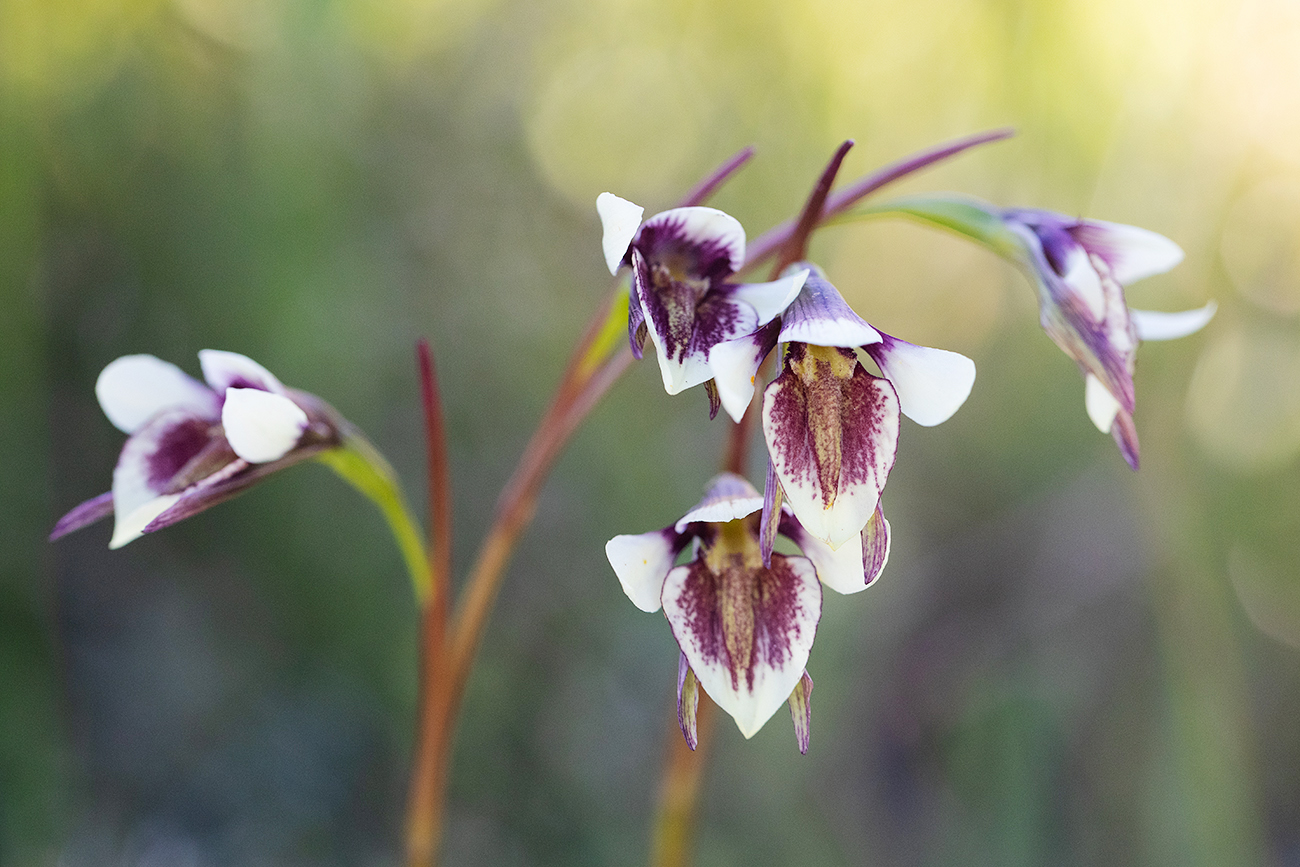
A paper from this work was published in Current Biology.
Now, Dr Hayashi works in the public sector on threatened species. In this role, he sees firsthand how useful it is to have detailed knowledge on specific plants and animals to help with practical conservation.
But in his spare time, he still loves to spend time in the bush and admiring the oddities of orchids.
“There’s an incredible whimsical charm in orchids like the greenhoods. They’re just such ridiculous plants.”
Take your own detailed deep dive into the quirks Australian flora and fauna with a degree from the ANU Research School of Biology.
Cover image: Tobias Hayashi

